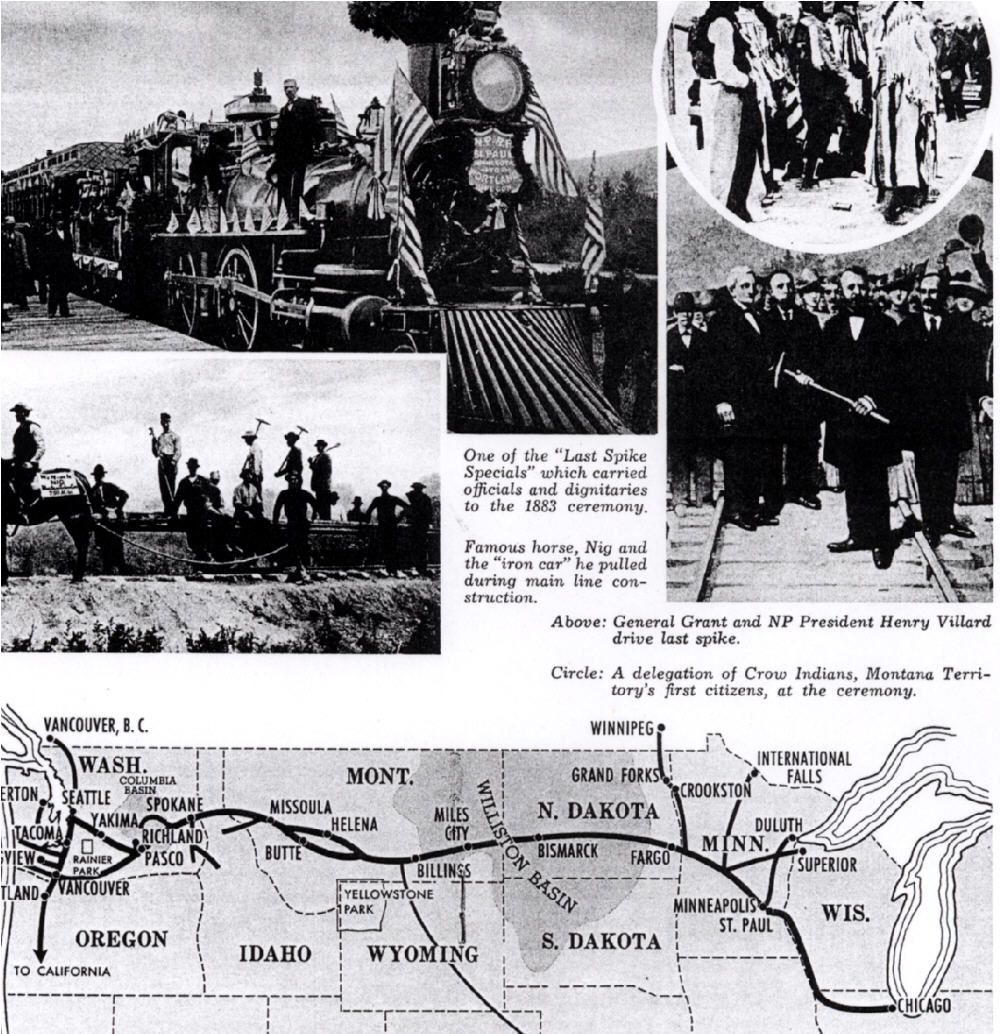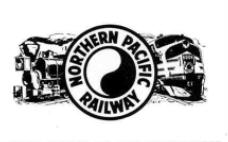
Over the Cascades
This dramatic and colorful ceremony marked the completion of the first northern through-route to the Pacific Coast, but not the completion of the Northern Pacific, as it was necessary to utilize the rails of the Oregon Railroad & Navigation Company between Wallula, Washington, and Portland, Oregon. This latter road was under tho control and presidency of Henry Villard during those years; nevertheless in order to comply with the charter requirements the construction of the Northern Pacific was continued from Wallula over the Cascade Mountains to Pugct Sound and a connection with the Portland-Tacoma line.
This work started in 1883. The last spike, which really constituted the completion of the Northern Pacific, was driven June 1, 1887, on the summit of the Cascades. Much of this line had been laid while tho ground was still frozen, and when the spring thaws came it was necessary practically to rebuild it. The crossing of the Cascade Range was a notable engineering achievement. The country is rugged and precipitous. The tracks were built as a great switchback with a ruling grade of 5.6 percent. This is to be compared with the ruling mountain grade now of 2.2 percent. There were three switchbacks on each side of the summit, and a great double horseshoe at the summit. The Stampede Tunnel, approximately one and eight tenths miles in length, now used by the Northern Pacific in lieu of the switchback, was completed in 1888, at an elevation of twenty-eight hundred feet.
During the time when the switchback was used special mountain engines were necessary and special crews took charge of the trains for the hazardous eight mile journey over the summit. There was a train limit of five cars, either freight or passenger. One hour and fifteen minutes was necessary to make the crossing, if all went well. There was a brakoman for every two cars, and not only were there air brakes and hand brakes, but special water brakes had been placed on the locomotives. With all its dangers, the switchback never cost a life.
The completion of the switchback was celebrated on a most lavish scale. The first regular westbound passenger train over the switchback arrived in Tacoma at 7:15 p.m., July 3, 1887.
A great triumphal arch had been erected over the principal thoroughfare. Over eighteen thousand visitors came from all parts of the Northwest to the city of Tacoma for this colorful celebration. There was a huge parade, with Colonel J. C. Haines, as Grand Marshal, and a special pavilion was constructed with a seating capacity of sixty five hundred. Governor Semple was the orator for the occasion; and among the distinguisl guests were the President of the railroad, C. B. Wright, and Vice-President Thomas F. Oakes.
Less than seven years after the of driving of the last spike in Montana, and within three years of the completion of the railroad over the Cascade Mountains, the entire tier of northwest territories had sufficient population to join the Union. North Dakota entered on November 2, 1889; South Dakota, which derived much of its population through immigration over the Northern Pacific came in the same day. Six days later, on November 8, 1889, the State of Montana entered. Three days after that, the State of Washing was admitted to the Union; and, on July 3, 1890, Idaho joined the ranks. The growth and ultimate admission of these States into the Union tell a graphic story of the part played by the North. Pacific in the settlement and development of Northwest.
In the decade following completion of the transcontinental line, the Northern Pacific turned its energies to constructing branch lines and building and expanding shop and terminal facilities. The west grew and grew rapidly and as the west prospered, so did the Northern Pacific. But the road to progress and prosperity is rarely without obstacles. Like a large number of other railroads, the Northern Pacific was forced into receivershipduring the general financial crisis which swept the country in 1893. The receivership ended in 1896 when the property of the railroad was to a new corporation called the Northern Pacific Railway Company. Successfully reorganized on a sound financial basis and with business conditions improving, the Northern Pacific now faced the new century with assurance and optimism.

